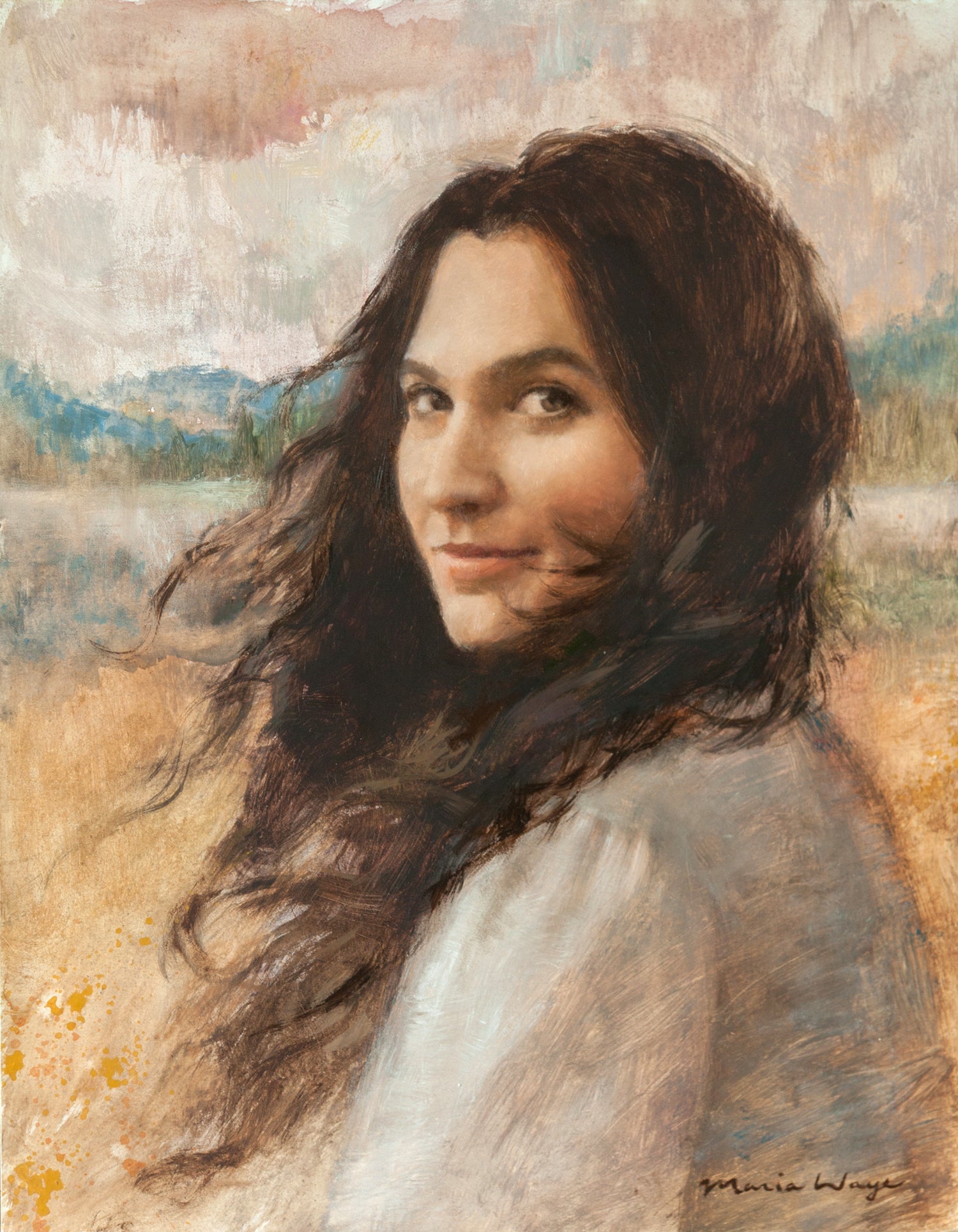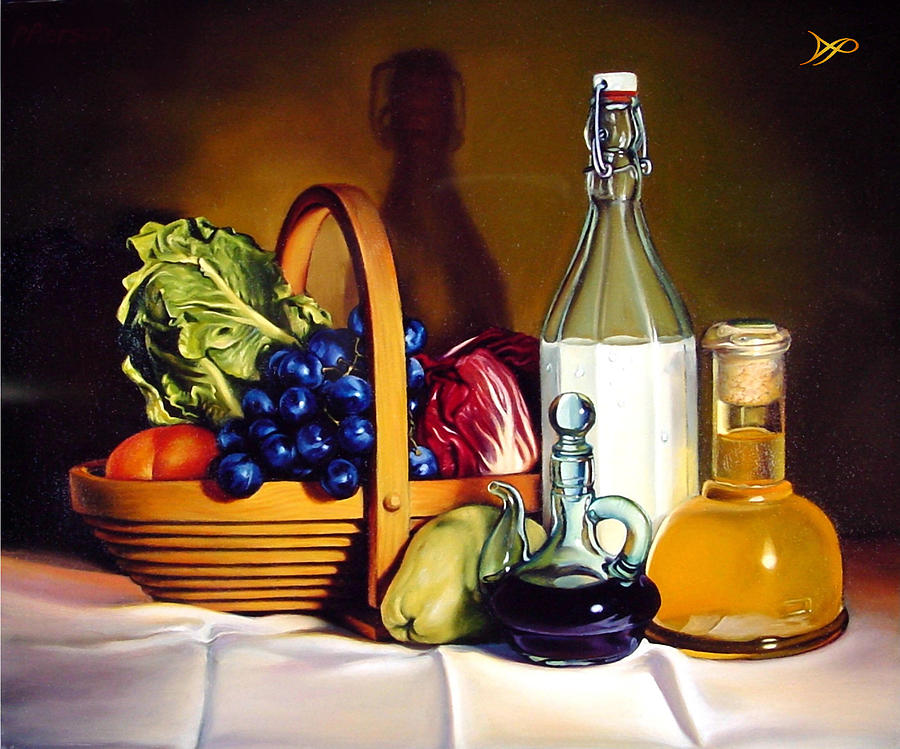Discover Timeless Artwork Oil Paintings for Sale Today
Discover Timeless Artwork Oil Paintings for Sale Today
Blog Article
Exploring All Concerning Oil Paints: An Overview to Comprehending Their Appeal and Worth
Oil paintings have actually astounded audiences for centuries, offering a look into the creative proficiency of numerous eras. Their abundant history is intertwined with innovative techniques and extensive psychological expression. Recognizing the materials and approaches behind these artworks can enhance appreciation. Additionally, the marketplace for oil paints offers opportunities for capitalists and collection agencies alike. As one discovers this interesting world, the question emerges: what makes an oil paint truly beneficial?
The Background of Oil Paint: A Trip With Time
Oil paint has roots that date back to ancient times, it truly prospered throughout the Renaissance, when artists discovered its versatility and rich shade possibility. Early examples can be traced to the 7th century, with methods advancing notably across cultures. The medium ended up being famous in Northern Europe in the 15th century, particularly via the jobs of musicians like Jan van Eyck, that pioneered its use for detailed realistic look and vibrant colors. This period marked a separation from tempera paints, enabling for better depth and structure. As oil painting spread, it influenced plenty of artists, resulting in work of arts by popular figures such as Leonardo da Vinci and Rembrandt. The medium's tradition continues, shaping the art world well into modern times.
Comprehending Oil Paints: Materials and Techniques
As musicians explore the world of oil paints, they experience a varied variety of materials and strategies that define this tool. The key components of oil paint include pigments, which supply color, and drying oils, such as linseed, that bind the pigments and help with application. Numerous additives can customize the paint's appearance and drying time, enhancing flexibility. Techniques like glazing, where transparent layers are developed, and impasto, which entails applying thick paint, enable for various visual impacts. Furthermore, the usage of brushes, scheme knives, and also fingers can create unique textures and surfaces. Recognizing these strategies and products allows artists to fully express their creative thinking and attain the desired effect in their artwork.
The Function of Shade in Oil Paintings
Color plays a crucial role in oil paints, affecting both aesthetic allure and psychological resonance. Comprehending shade concept basics, consisting of the relationships between colors, can improve a musician's ability to share state of mind and environment. Additionally, understanding shade mixing strategies permits greater deepness and splendor in a painting's combination.

Color Theory Essential
Comprehending shade theory is vital for artists collaborating with oil paints, as it creates the structure for developing aesthetically engaging and harmonious compositions. Shade concept incorporates the research study of how colors communicate, the shade wheel, and the partnerships in between key, second, and tertiary colors. Musicians use complementary colors to improve contrasts and create centerpieces, while similar shades advertise unity and cohesiveness within a piece. Additionally, the principles of warm and trendy colors influence the understanding of deepness and room in a paint. Comprehending these concepts allows artists to control shade successfully, leading the visitor's eye and communicating their designated message. Proficiency of color concept inevitably improves an artist's capability to share feelings and concepts via their job.
Emotional Effect of Shade
The psychological effect of shade in oil paintings plays an important function in just how audiences perceive and connect with artwork. Colors evoke particular feelings and moods, influencing the visitor's mood. Cozy shades like reds and oranges can create a sense of heat and energy, while trendy tones such as blues and eco-friendlies typically stimulate peace or self-contemplation. Artists strategically pick color schemes to boost narrative elements, directing the audience's emotional journey. The saturation and comparison of colors additionally amplify these impacts, attracting interest and creating emphasis. Ultimately, the interplay of colors in oil paints not only boosts their visual allure but additionally works as a powerful tool for emotional expression, enriching the audience's experience and interpretation.
Color Mixing Techniques
While numerous elements of oil painting add to the total composition, grasping shade mixing methods is necessary for attaining desired impacts and deepness. Shade blending can be approached through numerous approaches, including the subtractive and additive procedures. Additive mixing entails integrating colors of light, while subtractive blending relies upon pigments, where colors mix to create new shades. Artists often make use of a limited scheme to produce harmonious works, understanding the connections between main, secondary, and tertiary colors. Methods such as glazing and scumbling even more improve deepness and brightness. By masterfully blending colors, a musician can stimulate feelings, develop focal factors, and accomplish a feeling of realism, inevitably elevating the paint's psychological and visual influence.
Famous Oil Painters and Their Iconic Functions

Well known for their mastery of shade and technique, oil painters have actually created some of the most well known art work in background. Prominent musicians like Vincent van Gogh mesmerized audiences with his stirring brushwork in "Starry Night," while Claude Monet's "Impact, Sunup" prepared for Impressionism. Leonardo da Vinci's "Mona Lisa" stays a long-lasting sign of creative genius, showcasing his skill in capturing human expression. Rembrandt's "The Evening Watch" highlights his cutting-edge usage of light and shadow. Various other notable figures consist of Pablo Picasso, that reinvented contemporary art with his bold experimentation in works like "Les Demoiselles d'Avignon," and Georgia O'Keeffe, whose vibrant depictions of click here landscapes and blossoms aided specify American innovation. Each artist's special style contributed considerably to the oil painting landscape.
Exactly how to Examine the High Quality of an Oil Paint
Assessing the quality of an oil painting involves a cautious evaluation of workmanship strategies, in addition to an analysis of color and structure. Observing brushwork, layering, and the application of paint can expose the artist's ability degree. Additionally, the interaction of shades and the overall setup of elements add significantly to the paint's visual value.
Analyzing Craftsmanship Methods
A meticulous analysis of craftsmanship methods is crucial for determining the top quality of an oil painting. Evaluators must initially examine the application of paint; thick, textured brushstrokes might suggest a knowledgeable hand, while overly consistent applications could indicate a lack of depth. oil paintings for sale. The layering method is also crucial; the presence of lusters and differed density can enhance luminosity and complexity. In addition, the high quality of the products made use of, such as the canvas and pigments, plays a significant duty in sturdiness and total aesthetic. Interest to detail in components like edges and changes between shades reflects the musician's commitment to their craft. Eventually, these methods add to the painting's emotional influence and market price, working as signs of the musician's ability and intent
Assessing Shade and Composition
While reviewing the top quality of an oil painting, one need to focus on the interplay of shade and composition, as these aspects are fundamental to the art work's overall influence. Color selections can stimulate emotions and develop mood; consequently, the musician's scheme need to be examined for harmony and comparison. A well-balanced structure routes the visitor's eye and produces a feeling of unity. Musicians commonly employ strategies like the policy of thirds or leading lines to boost aesthetic interest. Furthermore, the use of light and darkness can add depth, improving the three-dimensionality of the painting. Ultimately, a successful oil painting weds shade and composition, engaging the audience and inviting a deeper recognition of the musician's vision and technique.
Taking care of and Preserving Oil Paintings
Correct treatment and conservation of oil paintings is important for keeping their stability and longevity. To protect these art work, it is crucial to show them away from straight sunlight, which can create fading and staining. Preserving a stable setting with regulated temperature level and humidity additional aids in stopping damages. Cleaning up need to be done delicately making use of a soft, completely dry cloth, avoiding any rough chemicals that might hurt the paint or varnish. Routine assessments for indications of degeneration, such as fracturing or flaking, are suggested. When saving or delivering oil paints, correct padding and framing are essential to avoid physical injury. Ultimately, attentive care adds to the visual charm and value of oil paints over time.
The Marketplace for Oil Paints: Collecting and Spending
Recognizing the market characteristics for oil paintings is essential for collection agencies and capitalists alike. The value of these artworks is affected by numerous aspects, consisting of the artist's reputation, historic significance, and present patterns. Enthusiasts typically look for pieces that reverberate personally while considering possible gratitude in worth. Auctions and galleries offer as primary places for trading, with rates fluctuating based upon demand and rarity. Purchasing oil paints requires study right into the marketplace, along with an understanding of authenticity and provenance. Furthermore, emerging musicians might offer opportunities for substantial returns, while established names can regulate high costs. Overall, a calculated technique to accumulating can produce both visual satisfaction and monetary incentives.

Often Asked Questions
What Are the Environmental Influences of Oil Paint Materials?
The environmental effects of oil paint products consist of the launch of unstable organic compounds (VOCs), dangerous waste generation, and source extraction for pigments. These factors add to pollution and eco-friendly degradation, elevating concerns among environmentally conscious artists and consumers.
Exactly How Do Different Canvases Impact Oil Painting Results?
Different canvases influence oil painting results significantly. Surface area, texture, and absorbency high quality can alter paint application, drying out times, and shade vibrancy. Musicians commonly select details canvases to attain preferred effects and boost their imaginative expression.
Can Oil Paintings Be Recovered if Harmed?
If harmed, Oil paintings can indeed be recovered. Specialist conservators use different techniques to repair tears, clean surface areas, and address discoloration, making sure that the artwork retains its initial charm and value for future generations.
What Are the Indicators of an Initial Oil Painting?
The indicators of an initial oil painting consist of noticeable brush strokes, texture variants, and an unequal canvas weave (oil paintings for sale). Additionally, credibility might be confirmed via provenance, signatures, and the presence of a varnish layer one-of-a-kind to oil mediums
How Has Modern Technology Influenced Modern Oil Painting Techniques?
Modern technology has significantly affected contemporary oil paint strategies by presenting electronic devices for planning, improved materials for texture and longevity, and online systems for offering and sharing art, thereby broadening musicians' innovative possibilities and target market reach. Oil paint has origins that date back to ancient times, it genuinely flourished throughout the Renaissance, when musicians discovered its convenience and rich color potential. The emotional influence of shade in oil paintings plays a critical function in just how audiences regard and connect with art work. While numerous elements of oil paint contribute to the general make-up, mastering color blending strategies is necessary for achieving desired impacts and deepness. Evaluating the high quality of an oil paint involves a careful evaluation of workmanship strategies, as well as an evaluation of shade and composition. While assessing the top quality of an oil painting, one should concentrate on the interplay of shade and structure, as these elements are essential to the artwork's general impact.
Report this page